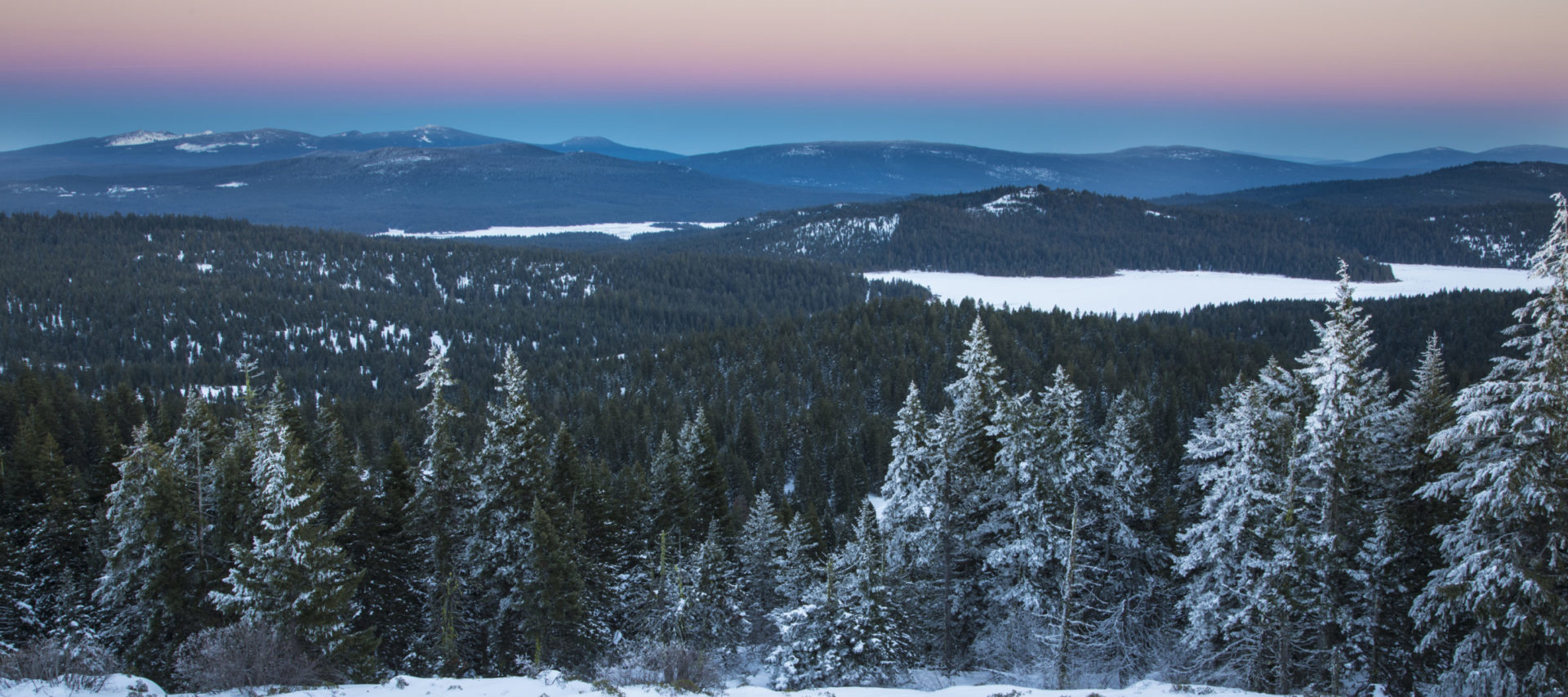

In one place grain grows best, in another, vines;
Another’s good for the cultivation of trees.
First he examines the needles, their suppleness and vibrancy and length. It’s not good to have a Christmas tree with short or too-flat needles, just like it’s not good to have a Christmas tree with spindly branches. They cannot bear the ornaments. Too many glass orbs have encountered death by cold tile, slipping off the boughs unobstructed. The needles need to be soft but obstinate in their attachment to the branch. That’s the only way to know the tree will last the season. Once cut, a tree can hold on to life’s aura a long time; less so its needles. A dead dead tree has no place in the parlor tree stand; it can be domesticated only through the conflagration of the fireplace. Besides, dried needles on a branch have no scent, and the fragrance of the evergreen is as integral to Christmas as its physique. In the picking out of the Christmas tree, then, my father’s first step is examining the needles.
As I sit in a D.C. café with East Coast friends a few days before traveling home for the holidays, they wonder aloud, “What even is the Northwest? We have no idea.”
I have a one-word answer with a footnote of world history on the tip of my tongue: “Trees,” I respond. “An empire of trees.”
Though there is an area of Southern California that has often been called the Inland Empire, the Inland Empire that my father, my grandfather before him, and I grew up in is that of the Pacific Northwest. Anchored to the greater Spokane, Washington area, it stretches miles over state boundaries: from the cathedral-like spires of the Cascade Mountains in western Washington, to a rugged spine of the Rockies called the Cabinet Mountains in the Idaho Panhandle, rounded off to the south by Oregon’s Blue Mountains, and to the north by the ancient Selkirks near the Idaho–Canada border, and embracing the fertile plateau of the Columbia River basin. Spokane, by far its largest city, counts some two hundred thousand people. For two decades now, Californian expats have been streaming into the region. But most of the Inland Empire feels still new and frontier-like.
The names of the original dwellers, like the Coeur d’Alene, the Kootenai, the Kalispell, and the Nez Perce, now identify rivers and counties and towns, high schools and hospitals and businesses. European descendants came in 1805 for the grand adventure that was Lewis and Clark’s expedition, commissioned by President Jefferson. The Nez Perce helped the explorers fell trees and make the dugout canoes they needed to ride down the Snake and Columbia Rivers on their way to the Pacific Ocean. Some years, for our annual Christmas-tree hunting, we break off from I-90 to adventure through the mountain paths where Lewis and Clark wandered. We pity their lack of GPS and four-wheel drive and marvel at their cartography. And we complain about the cold.
After Lewis and Clark, some entrepreneurial traders came, then came missionaries in the 1840s, and in the late 1850s West Point graduate John Mullan and the U.S. military came to build and defend the more than six-hundred-mile Mullan Road between Fort Benton, Montana and Fort Walla Walla, Washington. It was the first engineered road through the Rocky Mountains, connecting the Great Plains to the Northwest, and a testament to the prowess of West Point’s engineering instruction. Its construction ran through the rocky road of Civil War politics, however — something the American West doesn’t think about much, just as the East hardly recalls the numerous small Indian Wars the U.S. military fought out West while bridging the continent.
Gold was discovered at Pritchard Creek above the Coeur D’Alene River in 1883, the same year the Northern Pacific Transcontinental Railroad cut through Idaho, not yet a U.S. state. The wealth of the earth rooted the territory’s economy in mining lead, silver, and zinc along with the gold.
But it was what grew above ground that proved more golden: countless tall trees upon countless tall trees, white pine trees above all. And the railroad brought the loggers. Physical nature bears witness to the interconnectedness of human history. To understand empires we may begin with, and each year return to, trees.

See the long shadow that is cast by the tree?
We and the flowers throw shadows on the earth.
What has no shadow has no strength to live.
After he’s satisfied with the needles, my father walks away from the minutiae and surveys the layout of the branches, like an Anna Wintour of Coniferous Couture. A craftsman respects the stuffs of his craft; he is only as good as his response to the lowest quality of material before him. Come December, my father is a craftsman of Christmas trees.
The branches can’t be too tightly layered, or else there’s no place for the ornaments, and the extremities barely work for lights. The optimally lit Christmas tree must have two sets of lights: multi-colored small lights in the interior, wrapped close to the trunk, and multi-colored larger lights on the exterior, with steady bulbs replaced here and there with twinkling ones. Light must penetrate and radiate, a little like the stars. Spacing is key. The point isn’t that the branches be uniform, but rather that enough branches be placed to leave neither unsightly bare spots nor claustrophobic bunchings. The proper Christmas tree must be enjoyable from all angles — “Greek aesthetic, not Roman,” my father would say. Sometimes you can arrange the larger ornaments in gaps to trick the eye. Other times, you have to do some manual rearrangement.
Christmas trees that come from the wild are rarely commercial-perfect. My father became adept at improving upon nature, removing a branch here to drill into the trunk there, bending it to his will in a one-upping of Machiavelli’s dictum about bending fortune. But nature sometimes reasserts itself, and we’ll find a spider or two throughout the holidays inspecting the ornaments, weaving its will over them.
Small insects can decimate forests even before men can fell them. When the loggers came in the 1900s, they came from the depleted forests of the Great Lakes, from Michigan and Wisconsin and Minnesota in particular, which had given their timber to the initial building up of America. When they came to the forests of the Inland Empire, a few hundred species of bark beetles were already there, a natural part of the ecosystem. In the 1990s, the same decade my family moved from Montana’s Flathead Valley to the heavily treed Idaho Panhandle, drought-like conditions and decades of fire suppression were incubating a population surge among the white pine weevil and the Douglas-fir beetle populations. One of my new classmates came from an extensive family of Idaho loggers. At recess, I learned too much, though vaguely, about bark bugs and economic forces, fourth graders having curious interpretations of both. I had not thought something so tiny could devastate whole networks of families.
At winter’s end, the black beetles burrow through the outer bark of mature trees to the phloem — the soft inner bark — laying eggs along the way and cutting off the tree’s supply of water and nutrients. When trees have enough pitch, for which they need the reservoir of water from the winter snowpack, they can fight back against the beetle, drowning it. But the winters have grown more mild, and the snowpack smaller; there’s been less water and more beetles every year. Trees can be a bit dense, too — it takes only days for a beetle swarm to begin killing a tree, but the tree won’t fully realize it for about a year. Then its green turns into red, covering the mountainside in a different kind of fire. It takes a few more years for the tree to drop its needles and turn gray, and for the uninitiated to notice all is not well with the forests. Bark beetles have thus destroyed several millions acres of trees across the Northwest since the 1990s, stretching as far north now as British Columbia and as far south as northern New Mexico, disintegrating in their warpath billions of dollars that will never invigorate any market nor enrich individual lives into the middle class. What a conquest, for a rice-sized insect.
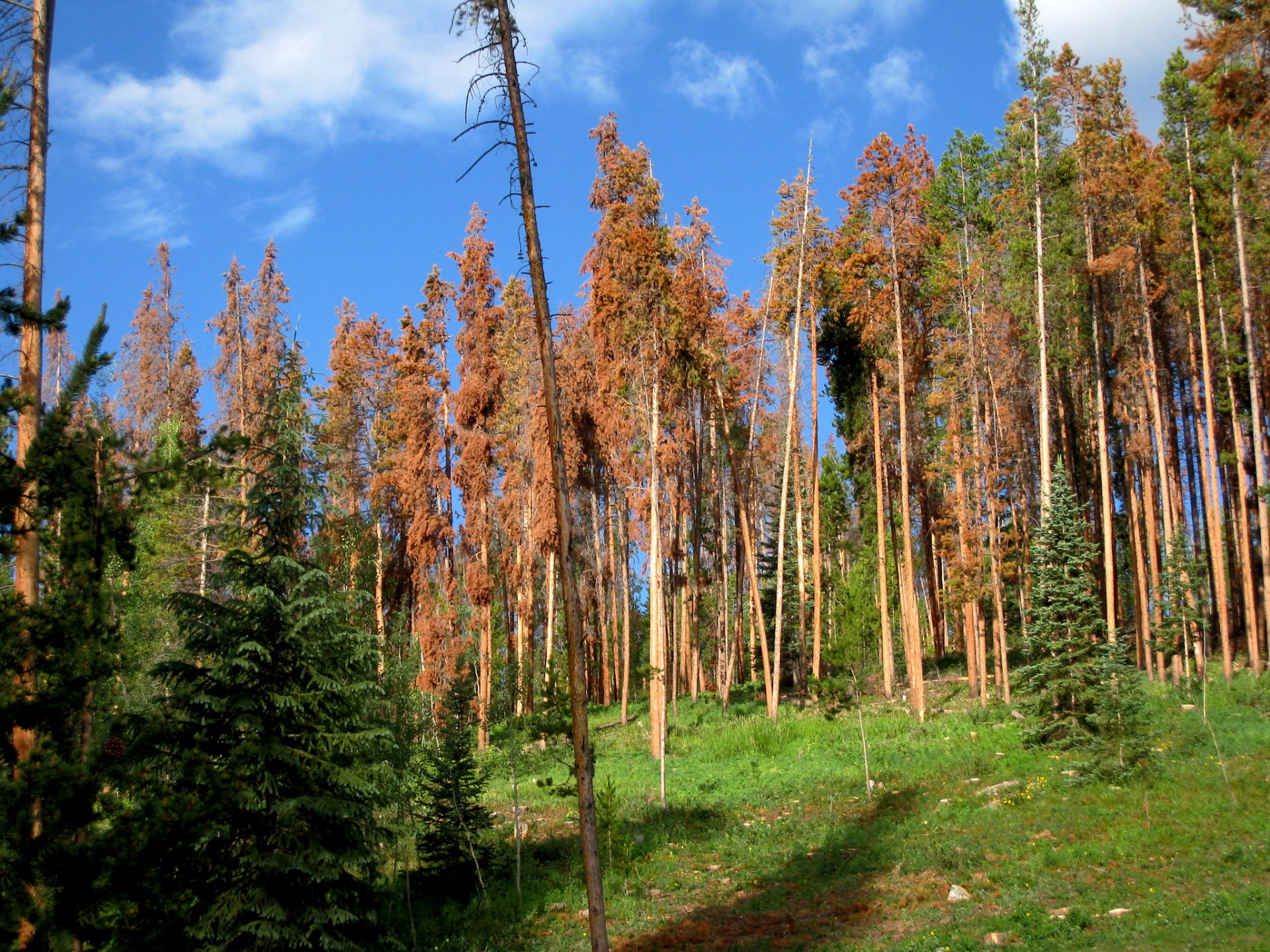
But the beetle is not the only killer of trees. Along with the Great Lakes lumberjacks in the 1900s came entrepreneurial German immigrants like the well-known Frederick Weyerhaeuser and the lesser-known Frederick Post, enticed by partnerships with the railroads to establish lumberyards and, importantly, sawmills and planing mills for lumber, which the railroads could transit throughout the breadth of America. Transcontinental transportation unwittingly enabled the international transfer of disease: European shipments of white pine seedlings brought “blister rust.” In a little over half a century the disease decimated the Inland Northwest’s white pines, killing up to 90 percent of these trees in Northern Idaho and Western Montana, with obvious effects on the state’s timber industry.
Since the 1930s the white pine has been the state tree of Idaho, but it’s now more a towering symbol of greatness past than a celebration of greatness present.
I wonder about the trees.
Why do we wish to bear
Forever the noise of these
More than another noise
So close to our dwelling place?
After examining the needles and the branches, my father sizes up the tree’s height and breadth: What good is an indoor tree if the star atop it isn’t aerial? A true contender must touch the tip-top of our ten-ish foot ceiling. In the family’s Book of Musts, the point of a Christmas tree must be greatness, never cuteness, for to indulge in wonderment is the audacity of the human spirit. Not for nothing did the Sophoclean Chorus sing oh so long ago: “Numberless are the world’s wonders, but none / More wonderful than man!” The most ancient human monuments, to say nothing of our American ones, are precisely thus monuments of imposing height — the column, the obelisk — bold bridgers of the earth to the heavens, simple but true. O Tannenbaum! O Christmas Tree! Made by nature or made by man, both are an invitation to wonder.
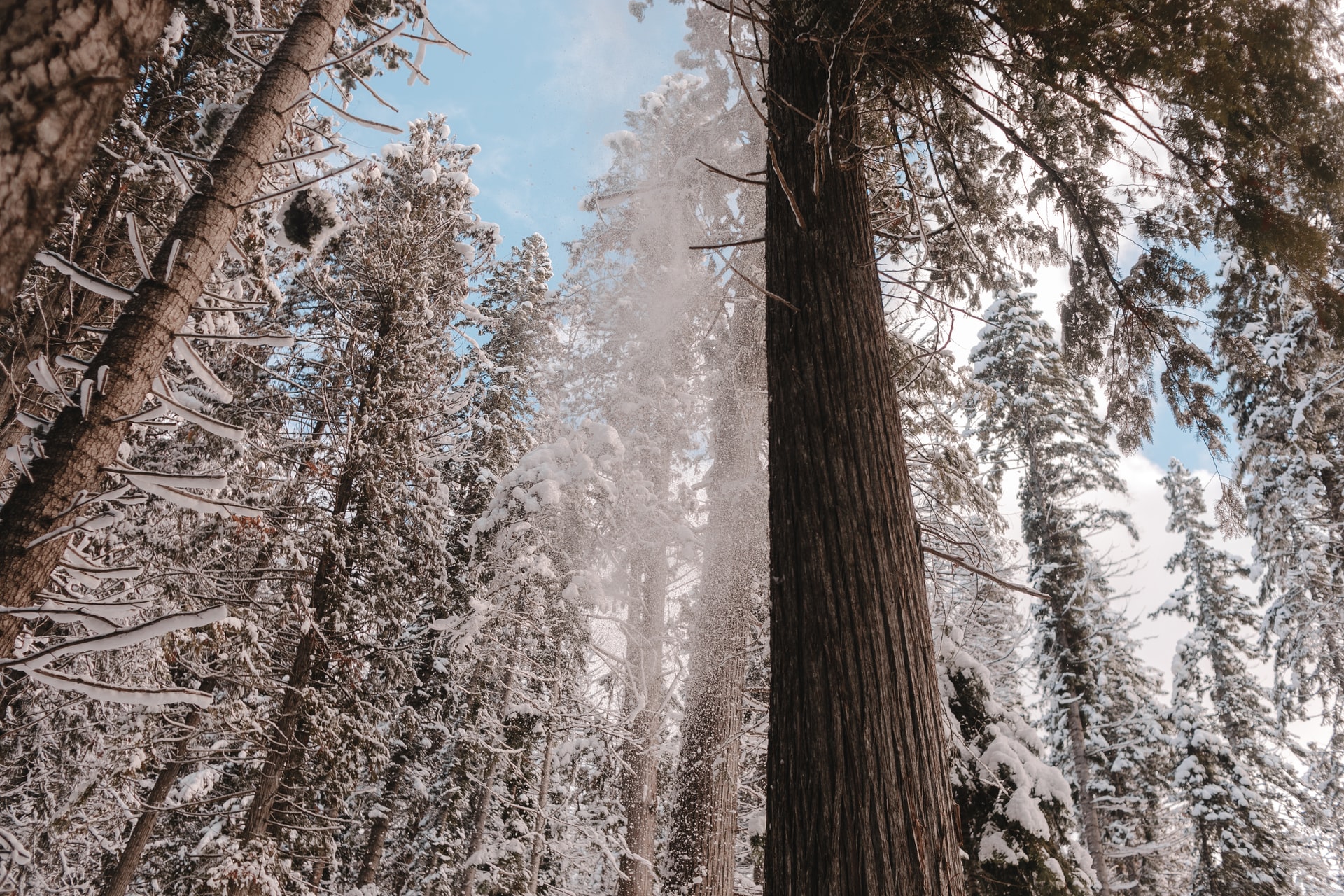
Height played its part too (along with breadth) in driving the prizedness of the Inland Empire’s white pines. Loggers sought the white pines because they grow tall and straight, with well-regulated whorls and an expanse of trunk free of branches for nearly two-thirds of its height. Craftsmen love the softwood for its ease of carving and responsiveness to carpenters’ tools — it is ideal for paneling and shelving and matches, and especially for making window frames and doorframes. Many a human being’s view of the world has unwittingly been shaped and determined by the white pine tree, Pinus monticola, of the Pinaceae family, kingdom Plantae.
The outlook provided hasn’t always been rosy. They called it “King Pine” in these parts, and like any king, the tree has extracted its levy. In terms of conquests the Pinaceae family keeps pace with history’s most formidable empires: Trees kill humans too. The U.S. Bureau of Labor Statistics, which every year publishes a census of the deadliest jobs, consistently reveals logging to be among the most lethal at about one fatal injury per thousand workers. Nature, red in tooth and claw — and branch, it seems.
It used to be that if you were a timber man or worked in the sawmill, you couldn’t fool a junior detective — you didn’t keep your limbs long. Safer technology and OSHA regulations have made that less common but hardly eliminated it, and when I visit my parents now, at grocery stores and at church and around town I still notice the missing fingers and the pronounced limps, telltale signs of the region’s occupational hazard. Last summer, a high school classmate’s brother was killed, crushed by his skidder or feller or swing yarder when it tipped over on the mountainside. The modern machines for tree harvesting are magnificent but deadly. It was not a unique accident. Every year the small towns that are the hubs of the logging industry here brace for such fatalities. That’s partly why logging has an aging workforce — the younger generation not caring overmuch for such odds. Like much of America, the young are abandoning the heavy industry of their family tree to work in the service sector. There are a lot of local Java Huts.
These tragedies and the grief that follow them seem local. But as we trek around the mountainside of the Inland Empire for our holiday foraging, the historical triumphs and tragedies of the humans among the trees echo, and will not be ignored. Nor can I ignore the view of world history shaped by trees, and how they connect this region with great world movements and moments, from the military machinations of the ancient Romans to the world wars of the twentieth century, to conflicts yet unknown.
Here, in eight-grade Latin, a French nun guided us through Julius Caesar’s precise foray into the barbarian Franco-Germanic forests, determined to conquer the Gauls. That long-ago, labored translating of the barbed passages in his Commentaries on the Gallic War, compounded by my cluelessness of military engineering, has stayed with me — I will never forget the anxious Siege of Alesia, and Caesar’s use of trees in outmaneuvering the Gallic chieftain, Vercingetorix. There, with one eye on the chieftain and another on the approaching enemy relief force, Caesar engineers a system of siege works with a heavy dependence on trees: circumvallation, contravallation, breastworks, palisades, and multiple trenches, many filled with sunken formations of transplanted tree trunks sharpened into stakes, concealed by branches, ready to impale any Gaul who falls in the trap. Trying to translate that tree stratagem nearly conquered us. But we pressed on, and Caesar did too, to conquer the Gauls with his well-laid works.
War in modern Gaul — that is, France — has demanded its own due from the timber folk of the Pacific Northwest. In 1917 the U.S. War Department, clued in by their British and French allies and directly petitioned by their own General John Pershing, requested the immediate formation of forestry troops as absolutely vital for the success of the American Expeditionary Forces. By the end of the war, the “Fighting Foresters” of the 20th Engineers Regiment — many of them from the Pacific Northwest — had been operating about eighty mills in France, providing lumber for railroads and trenches and bridges; for stakes in entanglement fences and hospitals; and for coffins. Many, many coffins.
Back in the Pacific Northwest, the Army had also formed the Spruce Production Division for, of all things, Allied airplanes. Allied manufacturers needed a strong, lightweight wood for their flying machines (wing spars, crucially), and they found it in the Sitka spruce in the coastal forests of Oregon and Washington State. But in May 1917 began the U.S. military draft, which crimped the experienced workforce available to harvest and process the needed timber. In one of those historical instances of worst timing, labor disputes throughout the region’s forestry industry threatened the timber needs of American civilians, the U.S. military, and the Allies. Alongside the Spruce Production Division, the Army thus created a quasi-union, the Loyal Legion of Loggers and Lumbermen, which provided a patriotic base for non-striking workers, applied further pressure on logging companies to raise wages and ensure better working conditions, and helped ensure the flow of lumber for the war.
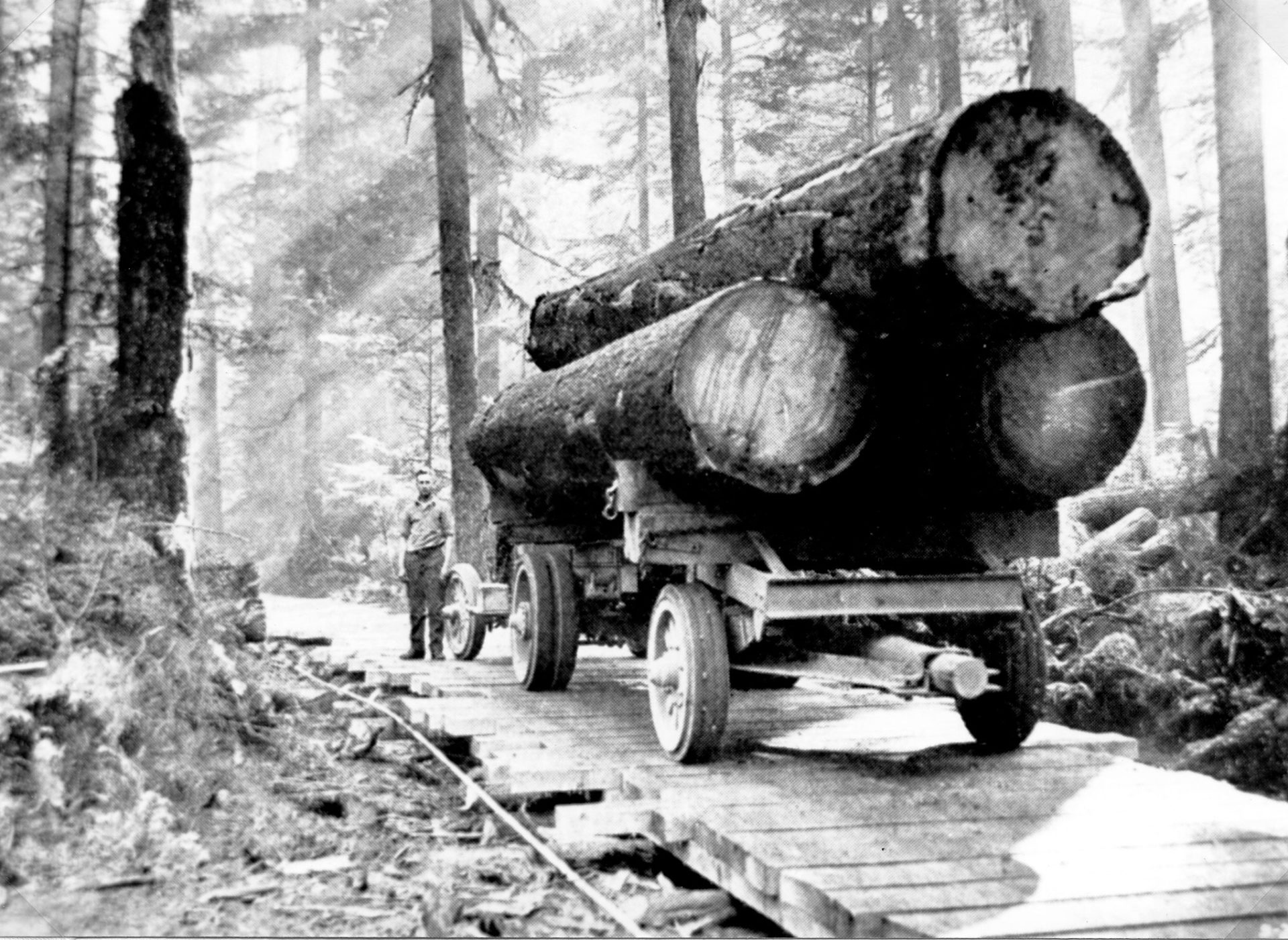
The “Spruce Squads” were a success in terms of the war effort. They were also a domestic success — building up a connected transportation grid of logging roads and railroad tracks and mills where none had existed beforehand. And they directly contributed to lasting improvement in the working conditions within the lumber industry.
But while there were hundreds if not thousands of Pacific Northwesterners who volunteered or were drafted into the Spruce Squads or the Fighting Foresters, their stories and perhaps even their names are largely forgotten. Nearly eighty percent of all Army records of those discharged from 1912 to 1960 were destroyed in 1973, when a fire roared through the National Personnel Records Center in St. Louis.
The individuals and the regiments may be now obscured by time, but the role of trees for war has certainly not abated, though it is becoming better camouflaged. Despite the increased use of metal and steel, plastics and fiberglass in the materiel of modern warfare, in recent years wood has been leading a technological revolution to transform everything from body armor and ballistic glass to impact-resistant tents. Smaller even than its needles or the bugs that feast on them, smaller even than the cellulose of its wood fiber, at the nanoscale of the tree is nanocellulose, which gives trees — despite their enormous height — the strength to withstand powerful storms. Combined with other materials into composites, nanocellulose is as strong as steel and Kevlar but more flexible and much, much lighter.
The dizzying web of connections running from trees to war and to history is a lot to ponder and to wonder over, not least while on holiday and traipsing about forests of the Inland Empire.
See Mount Soracte shining in the snow.
See how the laboring overladen trees
Can scarcely bear their burdens any longer.
See how the streams are frozen in the cold.
Bring in the wood and light the fire and open
The fourth-year vintage wine in the Sabine jars.
Back at work in the nation’s capital, when I say that I’ve visited family in Idaho over the holidays, I’m invariably asked how I liked growing up in the Midwest. Geographically, Idaho is nowhere near the Midwest; it is the West, and mountainous. But they do have a shared history of trees.
That Idaho’s history now includes a measure of shared economic decline is sadly also true. The money that used to grow in the local trees in the Inland Empire has gone away as timber has followed the path of many other heavy-labor industries, thanks to a complicated combination of industry itself (improved technology), nature (beetles), and politics (environmental regulation).
For much of timber’s U.S. history, it wasn’t just the main contributing industry to the regional economy of the Pacific Northwest; it was the local economy for many communities. The Center for the Study of the Pacific Northwest has chronicled how the development of rural communities was often financed by the harvest of timber on federal lands. As the logging communities grew, they remained reliant on the timber industry to fund schools, roads, even local governments. It wasn’t unheard of for a full half of the community’s budget to come from timber revenues. Between 1980 and 1986, the Weyerhaeuser Timber Company counted the closure of over a hundred mills in the region as it was relocating some of its own to Canada. There were over fifty mill closures in 1990 alone. Many more have vanished since, along with tens of thousands of timber industry jobs, even before the Great Recession. The Idaho town of Post Falls that my family and I moved to in the early 1990s, lost its mill along with all its jobs in 1995.
The evidence of that timber-centric economic model remains. Whenever we bump along the questionably traversable but scenic roads of wintry mountainsides on our annual Christmas tree hunt, it’s all around us, if only we choose to see it. Sometimes, we’ll spot evidence of an old timber slide or logging flume or narrow-gauge railway, or even parts of a steam donkey; we pass by a small community museum preserving the glory of its days of timber prowess; or we stop to photograph the curious because derelict remains of an abandoned mill. Even in the heart of an evergreen empire, the story of trees and men often feels like an already lost history. Standing quietly in the midst of it, suddenly one understands how even the memory of Troy could vanish.
Brusque coldness, coming from the winter winds, always does help recall one’s attention to the present from such odyssean wanderings. It’s possible that those of us who grew up in the midst of mountains and trees — who grew thanks to the industries fueled by trees — overburden their significance with, dare I say, sappy ornamentation. But in this Inland Empire of the Pacific Northwest where timber was the stalwart sentinel of men’s livelihoods, their solace in their sporting adventures, their inspiration and educator in their artistic moments, their link to world history, and a source even of patriotic pride for them, it seems likelier than anything said about the place of trees in their lives will be an understatement. Perhaps few who do not live among them think so much about the complex relevance of the tree to modernity. And yet trees still light the way, for so much of human life.
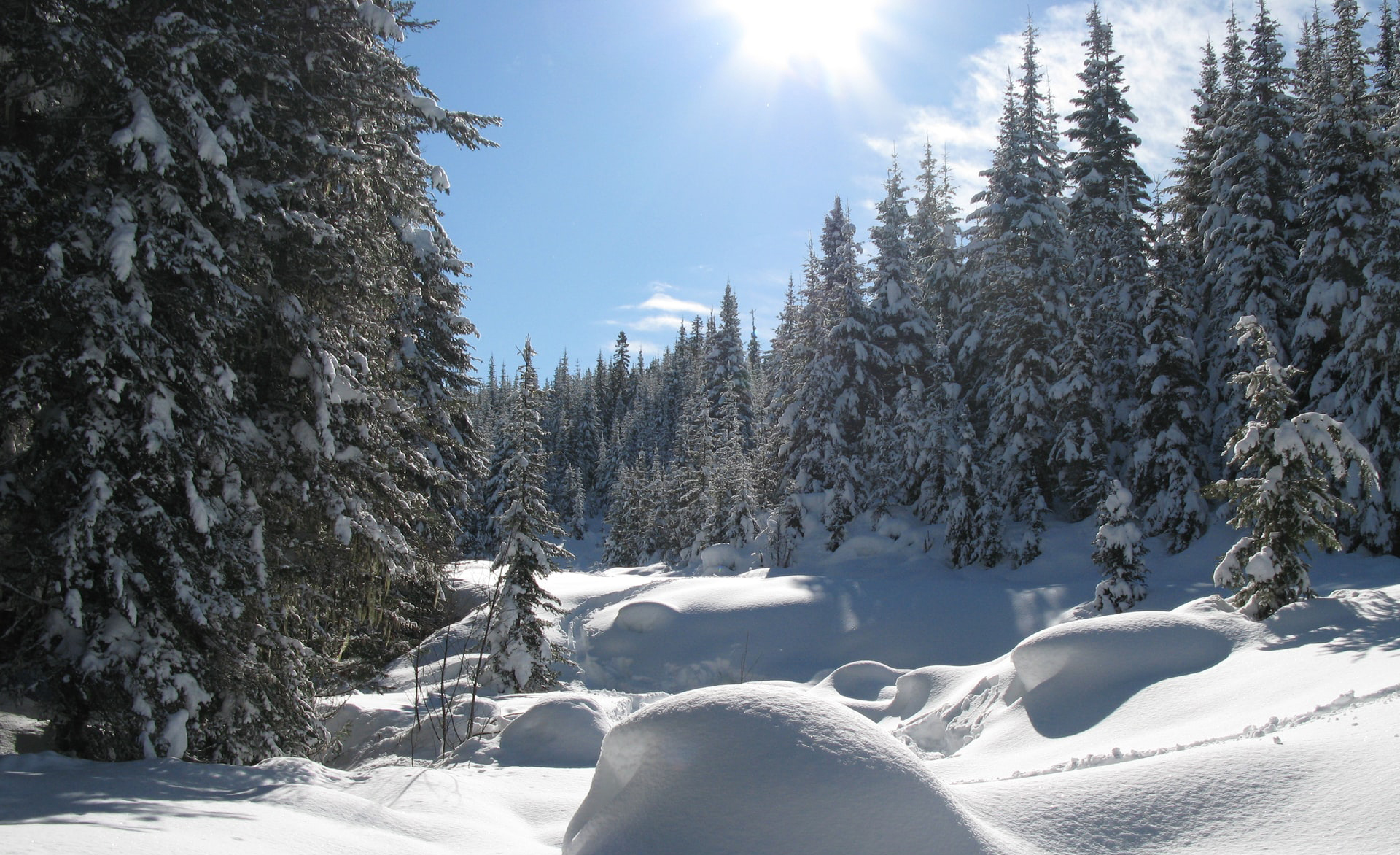
I part out the thrusting branches
and come in beneath
the blessed and the blessing trees.
Though I am silent
there is singing around me.
Once its limbs are satisfactorily engineered in the trunk and the whole is judiciously festooned with light strings, comes the penultimate effort: the decorating of the Christmas tree. There is an Aristotelian hierarchy to the placement of the ornaments that’s seemingly indelibly codified in our family’s Book of Musts…. for the first minute, at least. The parents’ first ornament from their first year of marriage must be the first ornament to touch those needles. It’s a large ruddy-cheeked stripped angel, which we can no longer decide whether it’s adorable or ugly.
Afterward is a happy conflagration of movement, of siblings’ arms and hands, step ladders, metal hooks, historic baubles, travel mementos, and lovingly handmade decorations, themed and created every year for more than thirty years for each niece and nephew by dear Aunt Kathy. The multiplicity of seashell, cornhusk, floss, glass, and wax angels would confound any theologian; the miniature stained-glass windows would incite the envy of those old cathedral masters for how they reflect the twinkling lights; and the mini musical instruments dare anyone to attempt playing them — but we do dare, annually. And at the end, laden in years of carefully crafted and collected ornaments and enlightened as it is by the soft glow of memories and colored electricity, there stands the Christmas Tree. And its standing invokes song.
Wood sings. Perhaps that’s one reason why Christmas music and Christmas trees seem incomplete without the presence of the other, why we (in theory, at least) gather round that tree and sing — To it? About it? For it? — O Tannenbaum! O Christmas Tree!
Stripped of all these domesticating decorations, of even its own natural apparel of bark, sanded down and varnished by human labor, carved and fitted with human artistry, wood sings. Violins, cellos, pianos, harps, guitars, clarinets have traditionally been carved into the grainwork of a tree and given new life.
A century ago, in the midst of the Roaring Twenties but on the heels of a first modern global war that brought America in arms to Europe’s shores, the Italian composer Ottorino Respighi wrote to the New York Philharmonic. His purpose was to remind them about how physical nature is “a point of departure” for remembering and understanding empires and events. The Philharmonic was premiering Respighi’s latest celebration of Rome, hence the composer’s letter — and his celebration of the empire that Rome became was all about the Pini di Roma, the fabled pine trees. In his colorful tone poem, he explained, “the century-old trees which dominate so characteristically the Roman landscape become testimony for the principal events in Roman life.” Through his music, Respighi conducts Caesar and all the conquering Roman generals of history along the famed Appian Way in all their martial glory, as they return from their conquests abroad to mount the Capitoline Hill and hence to receive the thanks and honor of Rome. Forever guarding their journey, both away from their motherland and back to its hearth, are the Roman pines. It’s the trees themselves that are the witnesses to history.
Perhaps all this history is too much significance for one tree to bear, divorced from nature and dragged into domestication at Christmastime, to be festooned with humankind’s artificial improvements for our own holiday cheer. But I have not understood why else we do this ritual; why it matters so much for the holiday’s completeness that we perform it; or how it came to be that we have entire fairy tales written about the Christmas Tree or beloved songs composed in praise of it. Trees are tied to memory, a psychological bridge to mimic the physical one they make between earth and sky. That is why we want the tallest one in our home, on Christmas — to complete the divide.
The Christmas season is wonderfully long for Catholics, stretching traditionally even until February 2nd, the old feast of Candlemass, as it used to be known, although in most households now the season closes on the feast of the Epiphany on the Twelfth Day of Christmas, January 6th. After one close or the other, holiday holder-outers must take down their Christmas tree. Our family revels in the full twelve days and the excuse to keep the tree up till at least mid-January. It’s a glorious reason to hold on to the holiday spirit of wonderment as far into a new year as possible.
At the end of the Christmas season, then, we divest the tree of all its borrowed glory, almost ceremoniously removing each family memory from its limbs. We check repeatedly for ornaments camouflaged in the thickness of the needles. My father removes the lights and takes the tree outside, where he chops away its beauty into some future utility. And every year, in the midst of that task he’ll come to the front door and holler inside for someone to take something off his hands — a forgotten Christmas treasure he discovered clinging to the branch, secured by the still-lush needles, shaken loose by the saw. So much depends upon the minutiae of the tree.
That was a good tree, he’ll say.
Exhausted by science and tech debates that go nowhere?